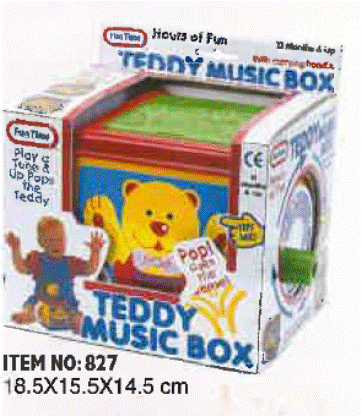Freely Available British and Irish Public Legal Information
[Home] [Databases] [World Law] [Multidatabase Search] [Help] [Feedback]
Intellectual Property Enterprise Court
You are here: BAILII >> Databases >> Intellectual Property Enterprise Court >> Luen Fat Metal And Plastic Manufactory Ltd v Jacobs & Turner Ltd (t/a Trespass) [2019] EWHC 118 (IPEC) (12 December 2018)
URL: http://www.bailii.org/ew/cases/EWHC/IPEC/2019/118.html
Cite as: [2019] EWHC 118 (IPEC)
[New search] [Printable PDF version] [Help]
BUSINESS AND PROPERTY COURTS OF ENGLAND AND WALES
INTELLECTUAL PROPERTY ENTERPRISE COURT
B e f o r e :
(sitting as a High Court Judge)
____________________
| LUEN FAT METAL AND PLASTIC MANUFACTORY LIMITED |
Claimant |
|
- and – |
||
| JACOBS & TURNER LIMITED trading as TRESPASS |
Defendant |
____________________
MR. JIM CORMACK, Solicitor Advocate of Pinsent Masons LLP, appeared for the Defendant
Hearing date: 12 December 2018
____________________
Crown Copyright ©
- The Claimant is the owner of UK trade mark registration no. 2 132 000, which is for a series of 3 word marks: FUNTIME, FUN TIME, and FUN-TIME. The filing date is 7 May 1997 and the registration is in respect of "Class 28: Games, toys and playthings; electronic games".
- The Claimant is also the owner of EU trade mark registration no. 806281, for the word FUNTIME, which was filed on 21 April 1998 and is registered for the same goods in class 28. The EU registration includes a note that "The trade mark was inherently distinctive, but evidence was submitted to show that, by the date of application, the mark has in fact acquired a distinctive character as a result of the use made of it".
- Neither side suggested that anything turned on the presence of 3 marks in the UK registration, nor that the result should be different on any point as between the UK and EU marks. Most of the argument was in fact directed to the UK mark, and the UK statutory provisions. I shall adopt the same approach in this judgment, save where otherwise appears.
- The Claimant alleges that the Defendant's use of a number of signs infringed its marks. Here are two examples of the use complained of (shown larger in Annex 1):
- The details of the use are slightly different, although the difference only becomes obvious on a close inspection (much closer than the above representation permits). In the example on the left, the words "FUN TIME TOYS" appear just under a row of stars. In the example on the right, the words "FUN TIME TOYS" still appear under a row of stars but this time they appear above the words "VALUE OUTDOOR LIVING". Again, neither side suggested that anything turned on these extra words and so I will ignore them. By contrast the Defendant did rely on the appearance of the word "TRESPASS", this being the Defendant's own mark. This can be seen in the top right of both examples given above.
- It will already be apparent, and will become even more apparent, that the task of writing this judgment has been made considerably easier by the realistic concessions made during the hearing by both sides' legal representatives. I am grateful to both sides for doing so. This meant that the trial was completed in a single day rather than the 1 ½ days allotted to it.
- The use complained of has now stopped although the Defendant did not stop immediately. In particular the Claimant wrote to the Defendant complaining of such use on 5th June 2017. The Defendant replied on 3rd July 2017 saying that it would place a sticker over the offending mark, but it was still offering the goods complained of in their original form (ie without any such stickers) in at least its Castleford store on 17th-20th July. Furthermore the Defendant has not offered any form of undertaking to refrain from such use in future.
- By Order of HHJ Hacon dated 9th April 2018, the issues to be decided are as follows:
- On behalf of the Claimant I heard oral evidence from Mr Alex Kenyon, Director of Padgett Bros A to Z Limited ("Padgetts"), the sole agent and distributor for the Claimant for the UK and Ireland since 1994, and from Mr Malcolm Naish, Managing Director of Lema Publishing.
- Mr Kenyon gave evidence about the Claimant's use of its FUNTIME mark in relation to a range of toys, which he said the Claimant had manufactured for at least 29 years. This was intended to support the Claimant's case on issue 2 (ie "the proviso"). In its skeleton for the trial, the Defendant criticised the adequacy of this evidence. That in turn prompted an application by the Claimant at the outset of the trial for permission to adduce more evidence of such use. I rejected that application for reasons I gave at the time: essentially this evidence should all have been given long ago if it was to be relied upon. Mr Kenyon also expressed his view that the Defendant's products might not comply with relevant safety procedures to allow them to be sold in the UK, although it became apparent in cross-examination he had no grounds for this.
- In closing the Defendant submitted that Mr Kenyon was not a good witness, for 2 reasons. First, because he was dogmatic; secondly, because his evidence was calculated to advance the position of the Claimant. As an example of the latter the Defendant referred to Mr Kenyon's views about the safety of the Defendant's products.
- I agree with the first criticism. I also agree with the second criticism up to a point. Specifically I agree that Mr Kenyon wanted to argue the Claimant's case. In addition to the groundless point about safety Mr Kenyon repeatedly went out of his way to try and introduce the evidence which I had previously ruled inadmissible. I am sure this was deliberate. However it was not put to Mr Kenyon that he was lying about any factual matters within his knowledge, and in any event I do not think that he was.
- Mr Naish's company publishes a toy industry specialist trade magazine called Toys'n'Playthings ("TnP"). He gave evidence about his own knowledge of the Claimant's FUNTIME mark, and the Claimant's advertisements in TnP. Mr Naish was specifically asked about the extent to which whether members of the public were aware of the FUNTIME brand. His answer was "I can't really say it's a well known preschool brand", and when asked for clarification he added "who knows what is in the mind of another?" As the Defendant pointed out, these answers meant that his evidence did not take the Claimant very far but the Defendant accepted (as do I) that he was a straightforward witness.
- On behalf of the Defendant I heard evidence from Mr Afzal Khushi, who has been a Director of the Defendant for approximately 35 years, and Mr Michael Kent, a product designer employed by the Defendant.
- Mr Khushi gave evidence about the Defendant's TRESPASS brand. He emphasised that the toy products complained of were a very minor part of the Defendant's product offering as a whole, which generally consisted of outdoor equipment and clothing. His cross-examination focussed on his statement that "The descriptive wording 'fun time' was added on our packaging as we merely wanted to emphasise, in a playful way, that using our products could result in an enjoyable time": see his paragraph [4].
- The Claimant submitted that Mr Khushi was lying about the Defendant's reasons for adding the word FUNTIME, and that this addition was clearly made with the intention of taking advantage of the Claimant's mark. I reject these submissions, which I do not think were ever actually put to Mr Khushi. In my view Mr Khushi was simply trying to argue the Defendant's case in much the same way as Mr Kenyon had tried to do for the Claimant, merely less dogmatically.
- Mr Khushi did not claim to know, or to have investigated, who had actually added, and/or approved the addition of, these words to the Defendant's packaging. Thus insofar as subjective intention matters, there is no evidence from the Defendant as to whose subjective intention it was to add these words, nor as to what result that person was trying to achieve.
- Although Mr Kent was a product designer, he did not give any evidence about product design. His evidence was restricted to his involvement in the restickering campaign. He was a fair witness but his evidence was not mentioned in closing submissions.
- I will address some more parts of the evidence in more detail in the relevant context, below.
- The Defendant realistically accepted that in the circumstances of this case, its argument under s 3(1)(b) added nothing to its argument under s 3(1)(c) so I can focus on the latter.
- S 3(1)(c) provides as follows:[1]
- Article 7(1)(c) of the Regulation corresponds to s 3(1)(c) of the UK Act. I was specifically referred to a recent General Court decision, Devin AD v EUIPO T-122/17 (25 October 2018) which summarises the position as follows at [18]-[19]:[2]
- The Defendant relied on W3 v EasyGroup Ltd [2018] FSR 16 at [148]-[150]. This adds some important observations about the "average consumer" made by the Court of Appeal[3] in London Taxi v Frazer-Nash [2017] EWCA Civ 1729 as follows:
- It was not disputed that the above approach was correct in law for both marks in issue. The Defendant also drew my attention to a number of other decisions by way of example (eg "TREAT", "FRUIT LOOPS" and Supreme Petfoods v Henry Bell [2015] EWHC 256 (Ch)) but these are merely illustrations of the above principles being applied to various sets of facts.
- The goods in issue here are games, toys, and electronic games. Neither side identified who the average consumer actually was. In my view the goods in question are mainly aimed at young children but will mainly be bought by adults. It is the adults doing the buying who matter in this context, in the sense that the guarantee of origin is directed to them and they are likely to rely on it, for example in making a decision to buy the goods. I will refer to such adults as being the average consumer from now on. The young children may not be paying very much attention to the trade marks, the packaging, or indeed anything at all in their enthusiasm to play with the goods in question.
- The Defendant's case, not disputed by the Claimant, is that the average consumer (whoever it is) would exhibit a low level of attention. I am not so sure this is correct for electronic games, but none of the evidence in the case related to computer games. In any event, in my view the difference between low and medium level of attention does not matter for purposes of this case so I will accept the parties' position.
- The question is whether there is a sufficiently direct and specific link between the FUNTIME sign and these goods to enable an average consumer immediately to perceive, without further thought, a description of these goods or of one of their characteristics. The words "immediately to perceive, without further thought" set a high standard although the relevant perception may be in relation to one of the product's characteristics rather than solely in relation to a description of the product itself.
- In answering this question I accept the Claimant's submission that it would not be enough to find that the individual words "FUN" and "TIME" were descriptive of anything: see eg Wieland-Werke v OHIM [2005] ECR II-0000, paragraph [31].
- The Defendant did not show me any examples of third parties using, or wanting to use, FUNTIME in relation to any of the relevant goods but the above extract from Devin shows that the application of this provision does not depend on the existence of a real, current or serious need to leave a sign free. Nor did the Defendant rely on any dictionaries. Instead it relied solely on the use of FUNTIME appearing in the Claimant's own advertisements, and on an article in TnP.
- In particular the Defendant submitted that the word FUNTIME appeared in the Claimant's own advertisements in a descriptive way. There were a number of examples, of which the following pair are representative (again, larger copies of these examples are shown at Annex 2):
- The left advertisement shows "FUNTIME" being used in 3 places: at the top, in a logo next to the ® symbol; in the book, "Welcome to the world of Funtime", and on the 3rd baby's back, "More FunTime" (after "More Toy" and "More Choice" on the previous backs). The right advertisement also shows "FUNTIME being used in 3 places: at the top next to the ® symbol; on the right, as part of the answer "It is FunTime" to the question "What time is it?"; and along the bottom, as part of "Welcome to the World of Funtime".
- In my judgment both of these examples are telling the average consumer that the trade source of the toys is an entity called FUNTIME, albeit they are doing so in a playful way. The average consumer would not immediately and without further thought perceive the word FUNTIME to mean that using the Claimant's products could result in an enjoyable time. On the contrary, further thought would be required in order to reach that conclusion. For instance the average consumer would have to ignore the clues (eg the ® symbol and "World of FunTime") that the mark FUNTIME is used to indicate trade origin.
- I do not see that this conclusion changes whether the average consumer is paying a low, or medium, degree of attention. Indeed it is probably stronger with someone paying only a low degree of attention.
- The other example was an article in TnP, which I reproduce at Annex 3. It will be seen that the context is a preview for the London Toy Fair. The article is headed "Stand E16. Let the Funtime roll. Padgett Bros" with an illustration of some toys. It ends with a quote from Mr Kenyon, as follows:
- The Defendant particularly relied on the header "Let the Funtime roll". Mr Naish was asked about it. He explained it was editorial, not advertising, and he thought it had been written by TnP's editor. Mr Naish added that the article appeared in TnP about 2 weeks before the London Toy Fair. Mr Kenyon was not asked whether he had created this, approved it, or even seen it. Since TnP is a trade magazine this is unlikely to have been seen by consumers.
- In my judgment, in this example the references to FUNTIME are telling the reader that the trade source of the Funtime range of toys to be shown at the forthcoming London Toy Fair is Padgett Bros. It is even less likely in this context that the reader (who will in fact be a person in the trade) would immediately and without further thought perceive the word FUNTIME to mean that using the Claimant's products could result in an enjoyable time.
- There was no other evidence about the use of FUNTIME in relation to any of the goods in question, and it follows from the conclusions which I have reached about this evidence that my answer to issue 1 is no. I accept that the mark has a low degree of inherent distinctiveness, because it does make an indirect allusion to a characteristic of the goods, However many trade marks (especially the successful ones) make some sort of indirect allusion to a characteristic of the goods or services for which they are registered. Section 3(1)(c) of the UK Act only prohibits registration of marks which consist "exclusively" of the specified characteristics and the FUNTIME mark does not consist exclusively thereof.
- In reaching that conclusion, I appreciate that I am differing from the European trade mark examiner although I am agreeing with the UK trade mark examiner. In any event I have not been shown what evidence and arguments were presented to either examiner on this point.
- Given my conclusion on issue 1, I do not need to consider this but I will do so in any event.
- Issue 2 is framed solely in terms of the proviso to s 3(1), ie distinctive character acquired before the date of the application for registration. S 47(1) of the UK Act raises a different issue, namely distinctive character acquired after registration. However it seems clear from paragraph [4] of the Reply, which refers to and quotes Art 4(4) of the Directive, that all of the Claimant's use prior to the date of the application for a declaration of invalidity is relied upon: see also the Defendant's skeleton argument at [3.2]. Specifically this means that the Claimant relies on all use prior to the counterclaim, issued on 22 December 2017, and the case was argued on this basis.
- I will restrict my conclusion to the UK mark since the position under the Regulation is different and this was not argued in any detail: see Art 7(2), 7(3), Art 59(2), 59(3) thereof.
- The Court of Appeal set out the approach to be adopted for testing acquired distinctiveness in Société des Produits Nestlé SA v Cadbury UK [2017] EWCA Civ 358, [2017] FSR 34, the "Kit Kat 4 fingers" case, at [16]-[22] (per Kitchin LJ, with whom Floyd LJ and Vos C agreed at [110], [111]). That case was concerned with an unusual type of mark, namely a shape mark, but the general principles set out (including eg those originally identified by the CJEU in Windsurfing [1999] ETMR 585 at [51]-[54]) are well settled and I shall apply them. These require the Court to consider, eg, the market share held by the mark; how intensive, geographically widespread and long-standing use of the mark has been; the amount invested by the undertaking in promoting the mark; the proportion of the relevant class of persons who, because of the mark, identify goods as originating from a particular undertaking; and statements from chambers of commerce and industry or other trade and professional associations.
- Nearly all of the use refers to use in the UK. There was a passing reference to Ireland but I was not asked to make any distinction between the UK and EU marks and the precise quantity of branded goods sold in Ireland as opposed to in the UK was not explored by either side.
- The Defendant pointed out that much of the Claimant's evidence of use was unsupported by any specific documents; and those documents which were disclosed tended to focus on trade-facing use, such as advertisements in TnP and attendance at trade fairs. Furthermore part of the Claimant's evidence relied on a statutory declaration filed by a Mr Eddie Lok, then a director of the Claimant, in connection with the application for the EU trade mark as long ago as 31st August 1999. This evidence was by definition almost 20 years out of date.
- There is force in these criticisms but I have to balance them against Mr Kenyon's evidence which included the following.
- The evidence does not cover all of the factors identified in Windsurfing, such as market share, but having regard to the nature and scale of the use in the UK I find that the UK mark has also acquired distinctiveness through use.
- It follows from my answer on issue 1 that the answer on issue 3 is no.
- Matters had moved on since the case management conference at which this issue was originally formulated. In particular, although the Claimant had relied on infringement pursuant to both s 10(1) and 10(2) of the Act, by the time of trial it only relied on s 10(2)(b). The Claimant's case was that the Defendant's sign consisted of a logo; that notwithstanding the inclusion of 3 stars and the word TOYS this logo was very similar to the FUNTIME word mark; and that it was being used in relation to goods which were identical to those for which the Claimant's marks were registered.
- I should also add that although the Defendant originally pleaded a defence under s 11(2)(b) of the Act/Art 14(1)(b) of the Regulation, this was not pursued in oral argument. The Defendant took the view – in my judgment, correctly – that if it did not win under either s 3 or s 10 of the UK Act, then given the circumstances of the case it was unlikely to win under s 11.
- The Court's approach to infringement pursuant to s 10(2) is by now very well established and is as set out by the Court of Appeal in Comic Enterprises v Twentieth Century Fox Film Corp [2016] EWCA Civ 41, [2016] ETMR 22 at [26]-[34]. This identifies six conditions which must be satisfied in order to find infringement at [28], and reinforces the importance of considering the context of the use at [33].
- These conditions do not include any requirement as to what the alleged infringer intended to achieve. At most, evidence that the Defendant deliberately intended to infringe might make the Claimant's task easier but I found no such evidence in this case. Mr Khushi's evidence as to what he thought had been intended by the Defendant was in any event a mixture of argument and speculation, and I disregard it.
- The issues in this case were instead whether the Defendant's use was "use as a trade mark"; and whether the presence of the Defendant's TRESPASS sign on the same goods prevented any likelihood of confusion (condition (vi)).
- The first issue is not identified as such in the list of six conditions set out in Comic, but the CJEU has held that use "in relation to" goods or services (condition (v)) means use "for the purpose of distinguishing" the goods or services as such: see eg the analysis by Arnold J in Frank Industries v Nike Retail [2018] EWHC 1893 (Ch) at [89]-[90]. Hence purely descriptive use of a sign does not amount to use of that sign "in relation to" goods or services whereas trade mark use of the same sign does: see ibid.
- Much of Mr Khushi's cross-examination was devoted to the issue of whether or not the Defendant's sign consists of a logo at all. He did in the end concede this and in my judgment he was plainly correct to do so, since it is. That of itself does not determine whether the Defendant's use is trade mark use or purely descriptive. For instance a logo saying "Made in China" would be purely descriptive. It depends on the nature of the logo.
- In my judgment, however, the Defendant's use would not be regarded by the average consumer as anything other than trade mark use. It is presented to the consumer in much the same way as TRESPASS is presented, ie as being something other than the name of the product (Super Skoosh Water Gun, or Kids Super Kite) and as being an indication as to who supplies it. The average consumer, particularly if paying little attention, would probably regard the Defendant's logo as a sub-brand or co-brand along with TRESPASS. Hence the use is for purposes of distinguishing the Defendant's goods from those supplied by other sources and condition (v) is satisfied.
- I agree that the Defendant's sign is very similar to the Claimant's FUNTIME mark in visual, aural, and conceptual terms. The word forms the entirety of the Claimant's mark and dominates the overall impression of the Defendant's sign. The only other parts of the Defendant's sign are the non-distinctive word TOYS, and the small stars, both of which have far less impact on the average consumer. It is also common ground that the Defendant's sign was being used in relation to goods, namely toys, which are identical to those for which the Claimant's mark is registered. These are powerful factors pointing in favour of infringement, even ignoring any enhanced distinctive character of the FUNTIME mark which has been acquired through use.
- I accept that the presence of TRESPASS on the packaging forms part of the relevant context. Does this prevent the likelihood of confusion? I do not think so. Some of Mr Khushi's evidence was directed towards establishing the proposition that the TRESPASS mark was well known, although I do not recall having my attention drawn to this evidence in closing submissions or indeed until after I circulated a draft of this judgment. However even if TRESPASS were well known the average consumer would still probably have thought that FUNTIME was owned by the owner of TRESPASS or at least that there was some economic connection between the two. Why else would they both be used on the same product, both being used separately from the actual product name? This conclusion applies whether or not one is considering sales of the Defendant's product in the Defendant's stores, or online via Amazon. I note that a similar line of argument failed in Frank v Nike, even though the Defendant's mark ("NIKE") was very well known and the marks in question were more different.
- The Defendant also referred to the lack of evidence of confusion. This can be an important factor but not where there has only been limited opportunity for real confusion to occur: see Maier v ASOS [2015] FSR 20, CA at [80] per Kitchin LJ. The Defendant gave no reasons to suggest there had been sufficient opportunity for real confusion to occur, particularly having regard to the fact that the parties' goods are sold through different trade outlets.
- Making a global appreciation of the factors identified above, I am in no doubt that there is a likelihood of confusion. It follows that infringement is established pursuant to s 10(2) of the UK Act. For the same reasons I find that there is infringement of the EU mark pursuant to Art 9(2)(b) of the Regulation.
- The Claimant accepted that its claim under s 10(3) did not really add anything to its claim under 10(2). I agree. Furthermore, and notwithstanding the parties' common position that it was unnecessary to distinguish between the EU mark and the UK mark I would prefer not to discuss the difficult topic of whether use of an EU mark in one member state is enough to establish a reputation in the European Union for the purposes of Article 9(2)(b). I will state my conclusions in brief, and for the UK mark alone.
- In my judgment the UK Mark does have a reputation in the UK for the purposes of section 10(3), given the findings I have made in relation to issue 2. The Defendant's use gives rise to a link between the Defendant's sign and the Claimant's UK mark in the mind of the average consumer, for the reasons given in relation to issue 4. The Defendant's use causes detriment to distinctive character of the Claimant's UK mark, ie dilution. Such use also takes unfair advantage of the distinctive character or repute thereof (ie constitutes free-riding): this conclusion does not require any finding that the Defendant did so intentionally, and I make no such finding. Further, the Defendant's use is without due cause. For these reasons, infringement of the UK mark pursuant to s 10(3) is established.
- I reject the allegation that the Defendant's use causes any detriment to the repute of the Claimant's mark (tarnishing). This was the subject of heated debate at trial. However the only objective evidence was the fact that some Amazon reviewers criticised some aspects of the Defendant's products, in much the same way that some other reviewers had criticised some aspects of the Claimant's products. That evidence does not justify any such conclusion of tarnishing.
- In short:
MR. RECORDER DOUGLAS CAMPBELL QC:
Introduction
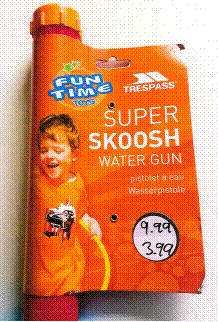
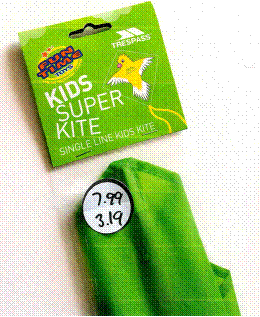
The issues to be decided
1) Whether the Marks are devoid of distinctive character within the meaning of section 3(1)(b) of the Trade Marks Act 1994 (the Act) or whether they consist exclusively of signs which serve in trade to designate the kind, quality, intended purposes or other characteristics of the goods for which the Marks are registered within the meaning of Section 3(1)(c) of the Act.2) If so, whether the Marks have acquired distinctiveness through use for the purposes of the proviso to section 3(1) of the Act.
3) Whether the Marks should be declared invalid.
4) Whether the Defendant's use of the words Fun Time as complained of by the Claimant constitutes infringing use within the meaning of Section 10 of the Act, taking into account the manner in which the words are displayed.
5) Whether the Marks have a reputation in the UK for the purposes of Section 10(3) of the Act.
6) Whether the Defendant's actions in using the words Fun Time as complained of are such as to take advantage of or be detrimental to the reputation of the Marks without due cause within the meaning of Section 10(3) of the Act.
The witnesses and their evidence
Issue 1 Whether the Marks are devoid of distinctive character within the meaning of section 3(1)(b) of the Trade Marks Act 1994 (the Act) or whether they consist exclusively of signs which serve in trade to designate the kind, quality, intended purposes or other characteristics of the goods for which the Marks are registered within the meaning of Section 3(1)(c) of the Act.
Legal context
Grounds for refusal of registration(3) (1) The following shall not be registered—
…
(c) trade marks which consist exclusively of signs or indications which may serve, in trade, to designate the kind, quality, quantity, intended purpose, value, geographical origin, the time of production of goods or of rendering of services, or other characteristics of goods or services,…
Provided that, a trade mark shall not be refused registration by virtue of paragraph (b), (c) or (d) above if, before the date of application for registration, it has in fact acquired a distinctive character as a result of the use made of it.
18 According to settled case-law, the signs and indications covered by Article 7(1)(c) of Regulation No 207/2009 are those which may serve in normal usage from the point of view of the relevant public to designate, either directly or by reference to one of their characteristics, the goods or services in respect of which registration is sought or contested (see, to that effect, judgments of 20 September 2001, Procter & Gamble v OHIM, C383/99 P, EU:C:2001:461, paragraph 39, and of 10 September 2015, Laverana v OHIM (BIO organic), T610/14, not published, EU:T:2015:613, paragraph 14). It follows that, for a sign to be caught by the prohibition set out in that provision, there must be a sufficiently direct and specific link between the sign and the goods or services in question to enable the relevant public immediately to perceive, without further thought, a description of the goods or services in question or of one of their characteristics (judgments of 22 June 2005, Metso Paper Automation v OHIM (PAPERLAB), T19/04, EU:T:2005:247, paragraph 25, and of 7 December 2017, Colgate-Palmolive v EUIPO (360°), T332/16, not published, EU:T:2017:876, paragraph 15). It is sufficient that a ground of refusal or a ground of invalidity exists in relation to a non-negligible part of the target public and it is unnecessary to examine whether other consumers belonging to the relevant public were also aware of that sign (see judgment of 6 October 2017, Karelia v EUIPO (KARELIA), T878/16, not published, EU:T:2017:702, paragraph 27 and the case-law cited).
19 The public interest underlying Article 7(1)(c) of Regulation No 207/2009 is that of ensuring that descriptive signs relating to one or more characteristics of the goods or services in respect of which registration as a mark is sought may be freely used by all traders offering such goods or services (judgment of 10 March 2011, Agencja Wydawnicza Technopol v OHIM, C51/10 P, EU:C:2011:139, paragraph 37). That provision prevents such signs or indications from being reserved to one undertaking alone because they have been registered as trade marks (judgment of 23 October 2003, OHIM v Wrigley, C191/01 P, EU:C:2003:579, paragraph 31) and prevents an undertaking from monopolising the use of a descriptive term to the detriment of other undertakings, including its competitors, whose range of available vocabulary for describing their own goods would thereby be limited (see judgment of 7 December 2017, 360°, T332/16, not published, EU:T:2017:876, paragraph 17 and the case-law cited). However, the application of that provision does not depend on the existence of a real, current or serious need to leave a sign free (see, to that effect, judgment of 7 October 2015, Cyprus v OHIM (XAOYMI and HALLOUMI), T292/14 and T293/14, EU:T:2015:752, paragraph 55 and the case-law cited).
"31 I agree with Briggs J that the notion of an average consumer requires the court to consider any relevant class of consumer, and not to average them. I believe that conclusion to be consistent with the approach taken by this court in Interflora Inc and another v Marks and Spencer plc ….34 As with all issues in trade mark law, the answer to disputed questions is normally provided by considering the purpose of a trade mark which, broadly speaking, is to operate as a guarantee of origin to those who purchase or use the product. In principle, therefore, and in the absence of any authority cited to us which is directly in point, I would consider that the term average consumer includes any class of consumer to whom the guarantee of origin is directed and who would be likely to rely on it, for example in making a decision to buy or use the goods. Against that background, I would not have thought it mattered whether a user was someone who took complete possession of the goods, or someone who merely hired the goods under the overall control of a third party.
Analysis


"Quite simply the range sells through for the retailer, while achieving an excellent margin. In new eye catching packaging, the Funtime range is strengthening year on year". Alex Kenyon, Sales Director, Padgett Bros.
Issue 2 - If so, whether the Marks have acquired distinctiveness through use for the purposes of the proviso to section 3(1) of the Act.
Legal context
Analysis
i) First, he said that since 2003 Padgetts have imported and distributed 3 315 739 toys bearing the mark. In cross-examination he explained that each toy had a mould mark saying "FUNTIME".
ii) Secondly, Mr Kenyon exhibited a printout from Padgetts computer system showing the toys and amounts imported and distributed on a UK basis (ie shipped to the customer via Padgetts' warehouse) since 16th April 2003. Although the printout did not show the marks, it did show the product codes and he explained that 99% of these items in the printout related to FUNTIME branded items. This was as far back as Padgetts' records went, and he estimated that approximately 2 million more toys would have been imported bearing the FUNTIME mark before that. Mr Kenyon also exhibited a further printout showing that over 1.1 million toys bearing the mark had been shipped directly to the customer since 2013.
iii) Thirdly, Mr Kenyon explained that in addition to the moulded mark the FUNTIME product packaging used the mark. Here is an example showing the FunTime mark being used in 2 places on packaging for a "Teddy Music Box" product.[4]
iv) Fourthly, Mr Kenyon identified a number of retailers of the Claimant's FUNTIME goods including eg Morrisons, The Entertainer, Poundstretcher, Poundworld, TK Maxx, and Wilkinsons. He also drew specific attention to printouts from the UK website of Amazon,[5] the online retailer. These showed that the Claimant's "FunTime Pop Up Farmyard Friends" product, identified by Amazon as being "by Funtime" was the no. 1 best seller in the "Learning and Activity Toys" category (and number 75 overall best seller in the toys category) as at 13th October 2017. He said there were approximately 100 FUNTIME toys on Amazon manufactured by the Claimant.
v) None of this evidence was challenged. For instance it was not suggested that Mr Kenyon was lying about it, or that any substantial part of the use relied upon related to use in Ireland rather than in the UK. The cross-examination did establish that the Claimant's products tended to be sold in a price bracket of £7.99 to £11.99, and that some Amazon reviewers criticised some aspects of the Farmyard Friends product, but nothing turns on either point.
iii) Whether the Marks should be declared invalid.
iv) Whether the Defendant's use of the words Fun Time as complained of by the Claimant constitutes infringing use within the meaning of Section 10 of the Act, taking into account the manner in which the words are displayed
Legal context
Analysis
Condition (v) – whether use "in relation to" goods or services
Condition (vi) – whether likelihood of confusion
Issue 5 - Whether the Marks have a reputation in the UK for the purposes of Section 10(3) of the Act.
Issue 6 Whether the Defendant's actions in using the words Fun Time as complained of are such as to take advantage of or be detrimental to the reputation of the Marks without due cause within the meaning of Section 10(3) of the Act.
Conclusion
i) The Claimant's UK and EU marks are valid.
ii) The Claimant's UK and EU marks are infringed pursuant to s 10(2) of the UK Act/Art 9(2)(b) of the Regulation respectively.
iii) The UK mark is also infringed pursuant to s 10(3) of the UK Act. I do not consider infringement of the EU Mark pursuant to Art 9(2)(c) of the Regulation.
iv) The counterclaim is dismissed.
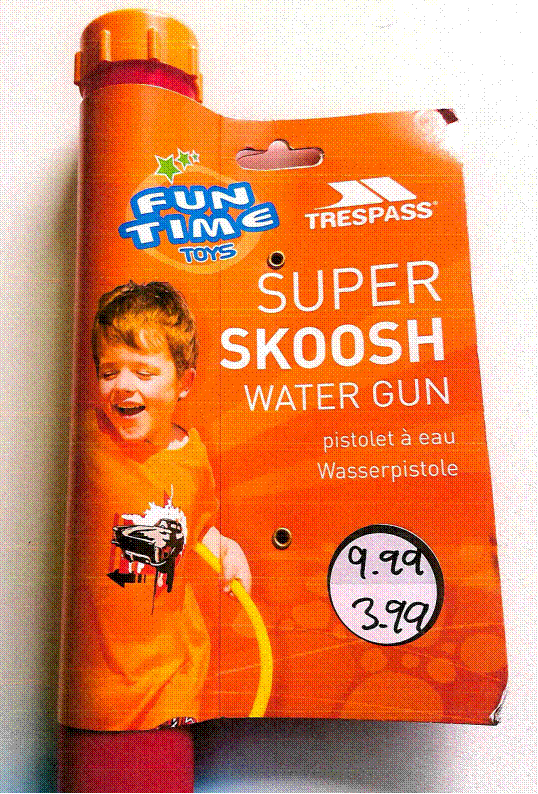
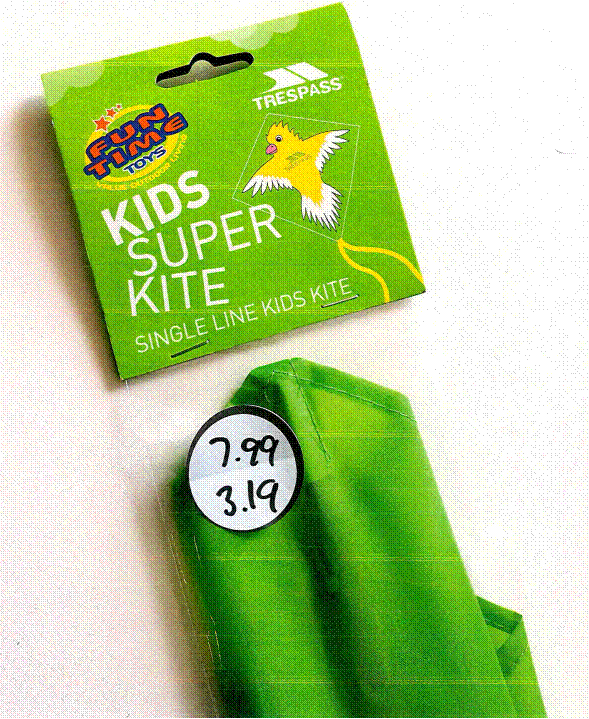
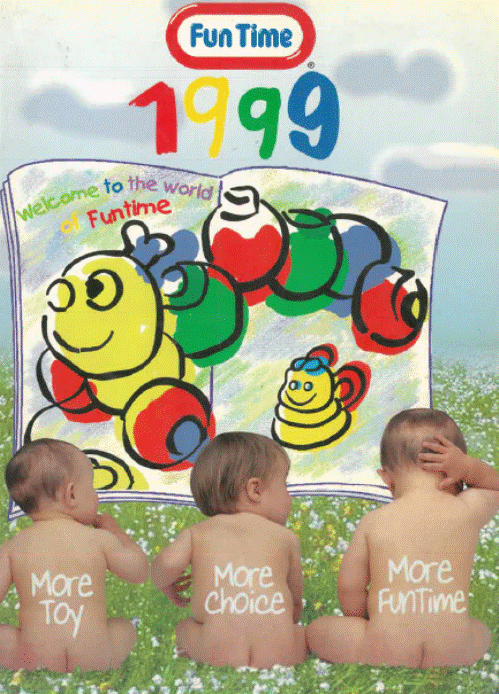
The messages on the babies' backs are: More Toy, More Choice, More FunTime.
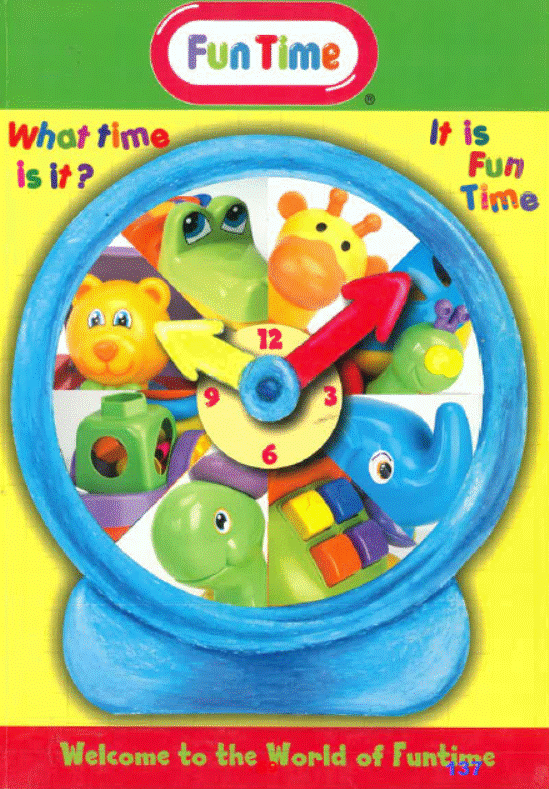
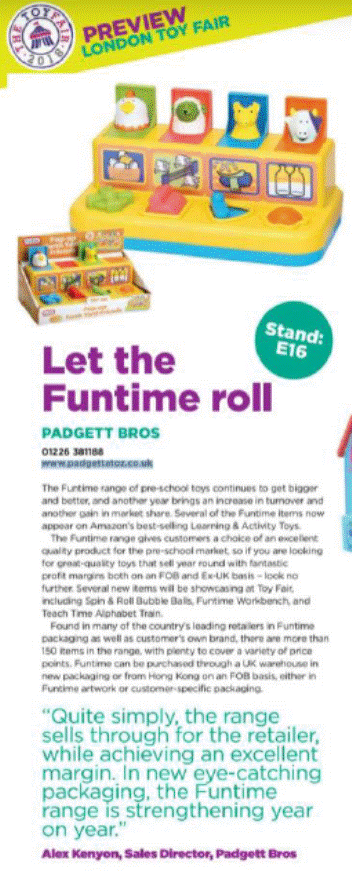
Note 1 Section 3(1)(c) of the UK Act corresponds to Art 4(1)(c) of European Parliament and Council Directive 2015/2436/EU of 16 December 2015 to approximate the laws of the Member States relating to trade marks (recast) (“the Trade Mark Directive”), In relation to the EU trade mark, the relevant provision of Art 7(1)(c) of European Parliament and Council Regulation 2017/1001/EU of 14 June 2017 on the European Union trade mark (codification) (“the Regulation”). [Back] Note 2 This decision refers to the equivalent provisions in the predecessor to the regulation, namely Regulation No. 207/2009. [Back] Note 3 Per Floyd LJ, with whom Kitchin LJ agreed. [Back] Note 4 There were other examples of a similar nature showing the FUNTIME mark on packaging for a “Mr Clown” product, a “Little Harbour” product, etc. [Back] Note 5 The web address does not appear on the exhibit but the prices are all in pounds and it offers free UK delivery on orders over £20. [Back]

